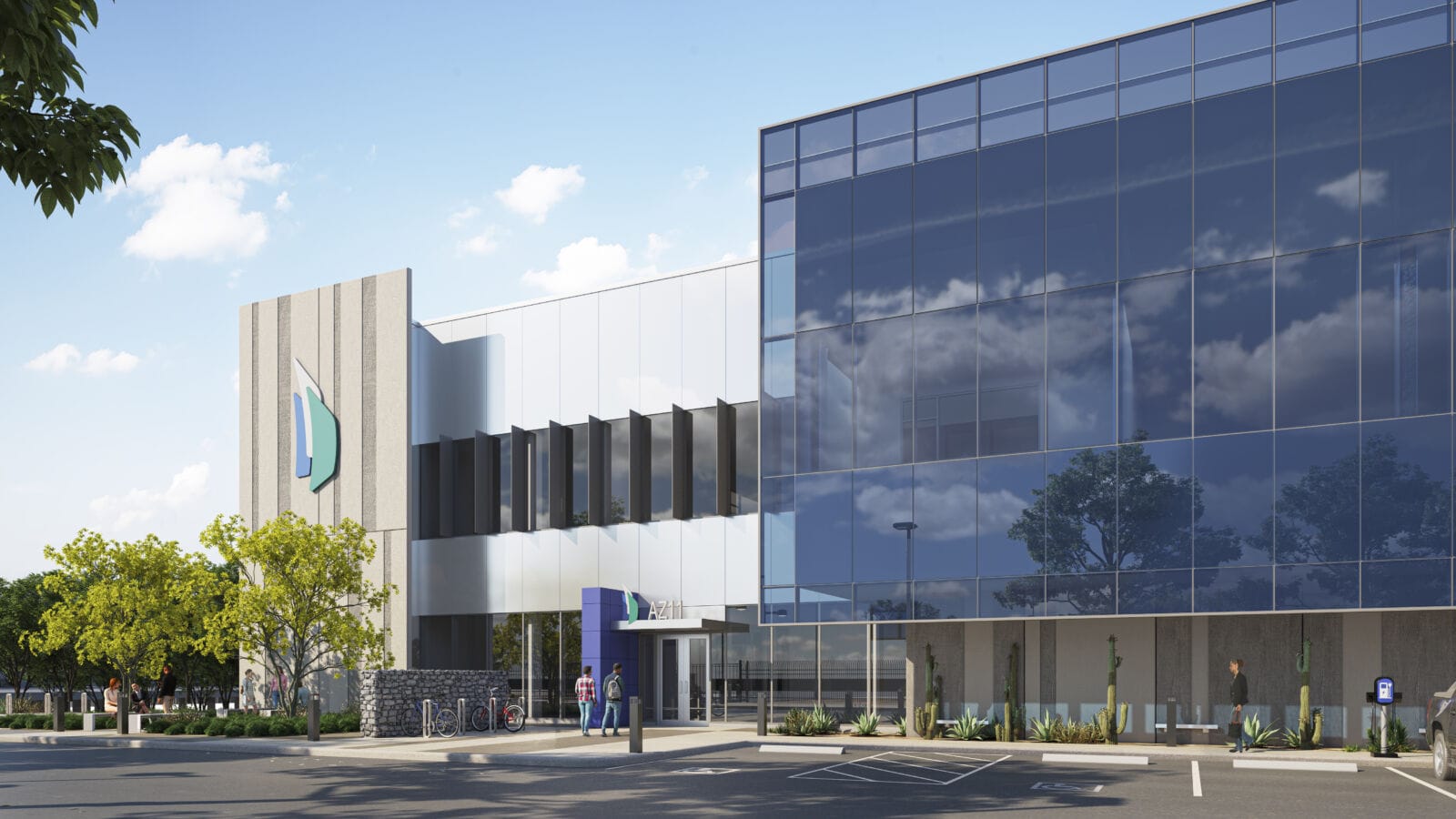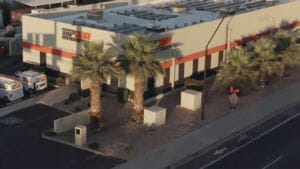Data centers are the brains of today’s economy, providing the technological infrastructure for companies across many sectors, enabling both mission-critical services and modern conveniences alike. Greater Phoenix continues to be a destination for data centers, thanks in part to low natural disaster risk, available land and power capacity. Despite the growth, sustainability concerns and the low number of long-term jobs created by these facilities puts the longevity of this data center boom in doubt.
According to a report from Cushman & Wakefield, after reaching a record level of absorption of 411 megawatts in 2022, the Phoenix market expanded even more in 2023 as it neared 600 megawatts absorbed, pushing the vacancy rate down to 2.1%.
“Phoenix has joined the rarified air of gigawatt-plus markets, and it has shown no sign of slowing, as hyperscalers and colocation providers alike have evaluated land sites across Mesa, Chandler, Goodyear, Glendale and Avondale,” the report reads. “With tight vacancy and many options when it comes to providers, Phoenix has quickly become the central data center hub along the West Coast.”
Johnathan Meade, COO of Meade Engineering, notes that his firm started to ramp up work on data centers in the mid-2000s as daily internet usage skyrocketed. Compared to the other types of industrial buildings, Meade says that the desired pace of construction for data centers is quicker because “the end customer believes that there’s a competitive edge for them to plug in before the next person [becomes operational].”
Data Center Demand
The need for data centers will continue to swell as the AI sector matures. The International Data Corporation forecasts that the global AI software market will expand from $64 billion in 2022 to nearly $251 billion in 2027 — a 31.4% compound annual growth rate.
In the world of venture capital, AI is “still the flavor of the day,” according to Mark Moeremans, managing director of The Journey Venture Studio. Despite not having some of the companies doing the deep research required for AI models, such as OpenAI, Moeremans believes there is opportunity for Arizona startups.
MORE NEWS: Phoenix leads U.S. data center markets in average asking rates
“There are a lot of great companies here that are applying AI towards specific industries and problem sets,” he explains. “The founders that figure out how to integrate AI into solving daily problems and delivering value for their customers are going to do really well.”
Moeremans adds that even though data centers don’t create many jobs, they are an economic development asset since large tech companies now have a presence in Greater Phoenix.
“It gives them a reason to be out here and see that Arizona is a great place to do business,” he continues. “When Meta sets up data centers, that’s great, but I want the executives to see that there’s a tech community here with the necessary talent and say, ‘This has been a great place to scale, what else can we bring there?’ I would hate for us to stop at just the data center component.”
Energy Availability
Inside data centers, tightly packed racks of servers hum along as they process myriad requests from users across the world. Doing so requires ample electricity, and the heat generated from the servers necessitates advanced cooling systems to keep the systems from malfunctioning.
A data center will generally consume more power per square foot compared to other industrial buildings, Meade says, which is a limiting factor for future development in Greater Phoenix. Indeed, a JLL report on data centers notes that energy generation is “the key factor for growth in Phoenix.”
To put the power needs in perspective, Karla Moran, manager of economic development for SRP, says during the Urban Land Institute (ULI) Trends Day event that 45 data center projects are requesting a total of 9,000 megawatts, whereas there are 25 manufacturing projects asking for about 200 megawatts.
MORE NEWS: Meta teams up with SRP to power Mesa data center with solar energy
“There are a lot of markets that are grappling with the growth they’re seeing and hitting pause on [data center] development so they can catch up,” she continues. “We’ve been very forthcoming with our clients on timelines and costs — they’ve accelerated more than anyone would like. Two years ago, it’d take about two to three years for a substation [to get built], now it’s four years. That’s the situation we’re in.”
The boom Greater Phoenix has seen over the last decade means that energy consumption across the board is higher than ever — and is climbing rapidly. According to Jose Esparza, senior vice president of public policy for APS, the utility expects energy usage to increase 40% by 2031.
“We’re seeing a tremendous amount of growth happening here in Maricopa County,” Esparza explains at ULI Trends Day. “For example, we serve [TSMC] and everything sprouting up around that, which takes a huge amount of capital. We’re spending about $2 billion a year to keep up with the current growth.”
Sustainability
The rising demand for electricity coincides with utilities incorporating more renewable energy into the power grid and moving away from sources that emit carbon dioxide into the atmosphere. APS has a goal to be carbon-free by 2050 and SRP has a goal to achieve net-zero carbon by the same date.
“We have 300 megawatts of battery storage on the system, and we’ll have another 2,000 megawatts in two years,” Esparza says. “We will close our final coal plants on the Navajo Nation in 2031. We’re very fortunate in Arizona to have the country’s largest nuclear power plant, Palo Verde, and that’s a big part of being carbon-free as well.”
Court Rich, co-founder of Rose Law Group and director of the firm’s Regulatory and Renewable Energy Department, says that data centers are “probably doing more to help the proliferation of renewable energy than any other sector.”
“Almost every data center user,” he continues, “is demanding that they be served by either all or an extremely high percentage of renewable energy. They’re driving development of solar, battery storage and wind projects, but those take time to build.”
Not only do these projects take time to complete, but they can run into development-related issues, such as getting approval for transmission lines to connect a solar project to the grid and going through local zoning.
“There’s a lot of disinformation out there,” Rich says. “Oftentimes, people complain about things that just aren’t true about solar — like the project is going to make their neighborhood a half mile away warmer or that it will deplete the water table. Solar uses almost no water. Usually, if you talk to someone reasonable about it, they get that most of the concerns are unfounded. But there’s certainly a right place for every kind of [land] use.”
Water usage is another concern for data centers, yet Rich notes that data center developers are also mindful about one of the Valley’s most precious resources.
“They put a tremendous amount of thought into how to reduce or avoid using water at any turn,” he concludes. “While data centers are big infrastructure projects that need tremendous amounts of electricity, they’re at the leading edge of doing it all the right way.”




